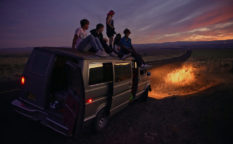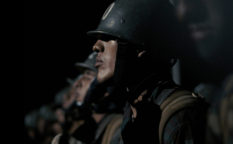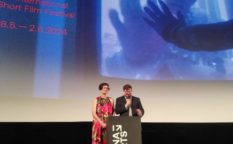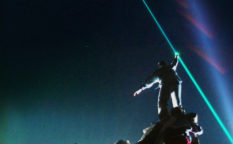Review: Motorcity (2021)
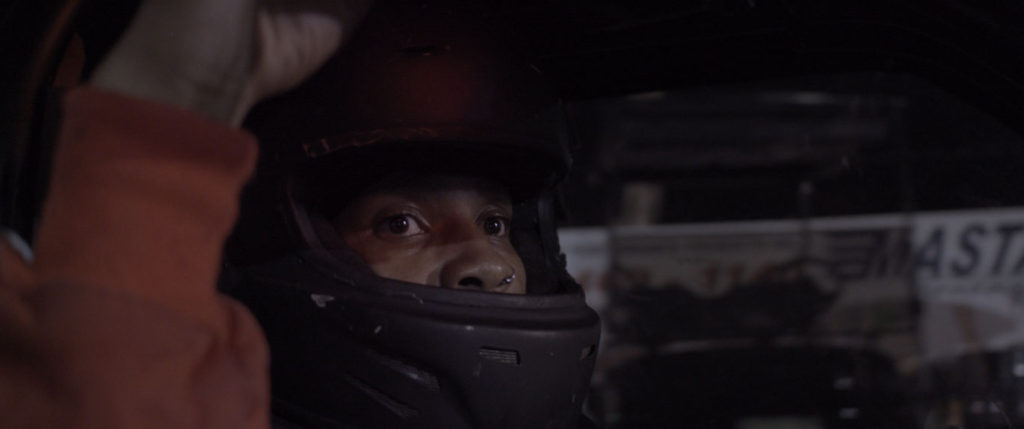
The history of the city of Detroit is directly connected with the automotive industries. At the high point of the American motoring, Detroit was a richly budgeted 2 million people city that attracted the workforce from all over the United States. Nowadays, its population counts mere 600.000 people and the recent history records it being the only American city that has filed for bankruptcy. Long story short, it has been always connected to the cars to the point one could say it breathes petrol.
The car culture is still present nowadays, at least in the form of drag racing, either illegally on the streets or in the institutionalized form at the specialized race tracks called dragways. The rules are simple, as they should be in an American motorsport: the length of the track is 1/4 of a mile, or 1/8 of a mile and the categories are based on the types of cars, the modifications that were made on them, their horsepower and their track record. Some amount of money is still involved in the competitions and street bets, but even that is fading in favour of other professional sports.
Even relegated to the level of an expensive hobby, drag racing still reflects the American simplistic (or purist, depending of a point of view) racing philosophy. In Europe, car racing was always the sport of the elite that involved some advanced engineering and tracks and rallies built around the landmarks and monuments. In America, however, racing has different roots, those of the underprivileged working class people. If NASCAR grew from the competition between the (former) moonshiners on oval-shaped dirt tracks, then drag racing was a thrill ride for the turned-down war veterans.
The purity of drag racing serves as the source of inspiration for the Austrian filmmaker Arthur Summereder and the diversity between the ranks of the people who are still involved in it as the fuel for his documentary Motorcity that has just premiered at Diagonale. It is so personal and so earnest film project that Summereder even opens it with a clipping of him being a “star” of a true-crime-show on cable television. The topic was the illegal immigration and the filmmaker was a suspect for the reason of his frequent visits to Detroit without a work visa. As he told to the officials, he is just that into drag racing culture.
The film itself is a guerrilla-style documentary that expresses the ambition to show the panoramic view of the culture in all of its diversity and significance to the once glorious, now rundown place. For that he has a fine selection of protagonists. John Quick is a car nerd of sorts who would spend the New Year’s Eve in his garage, doing modifications to the engine of his street-legal-looking mean machine. Karri Anne Beebe is dubbed “the fastest woman in Michigan” and is one of the rare women in the sport, making her position initially tough. And there are the Carters, the drag racing family. The father, who came to the city in the 60s from the Deep South to work in a GM factory, spent 50 years drag racing for fun and some small money and now wants to retire, while the son has been born into the culture and now has some modern ideas about his “career” in it.
The other interviewees are a struggling dragway owner, the city chief of police who has the understanding for drag racing and offers a simple solution to put it away from the streets and onto the tracks and a techno music legend Mike Banks of the Underground Resistance label who help us connect the dots between the racing, the automotive industry, the historical events and the culture of the city. The archival footage of the 1967 race riots (that were actually more of the class riots than the race ones), the car- and labour-themed murals of Diego Rivera and the promotional video from the launching of 1992 Jeep Grand Cherokee also find their way into the film’s 87 minute runtime.
Although it is by no means a masterpiece, Motorcity is a commendable effort and the miracle of it is that it was pretty much realized by a single person. Arthur Summereder served as its producer, writer, director, narrator, cinematographer and editor, and one of the sound designers and sound recordists, doing a decent to good job in every department. That shows the level of commitment, the heart, the soul and the passion matched only maybe with those of the drag racers.
Runtime: 87’
Country: Austria
Languages: English, German
Directed by: Arthur Summereder
Written by: Arthur Summereder
Cinematography by: Arthur Summereder
Editing by: Arthur Summereder
Music by: Mike Banks (“Attac of the Samurai”), G.F. Händel (“Organ Concerto in F Major”)
Sound design by: Arthur Summereder, Eric Spitzer
Sound recording by: Arthur Summereder, Christoph Kizok, Daniela Zellinger
Colourist: Klaus Pamminger
Supported by: Federal Ministry of Art, Culture and Sport, Kulturland Oberösterich, Wien Kultur


